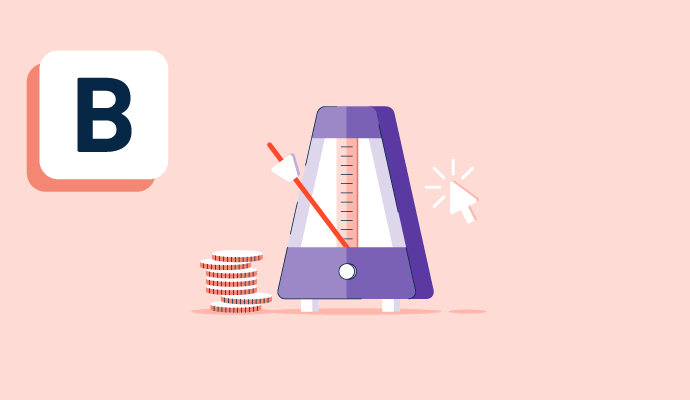What is budget pacing?
Budget pacing is a paid media strategy advertisers use to remain in line with campaign budgets. This strategy works by tracking and optimizing elements of an advertising campaign to adjust the rate at which the campaign is using its budget.
Advertisers must often allocate budget spend evenly throughout an advertising cycle, and budget pacing is a way to meet these targets. It’s common for advertisers to keep track of budget pacing using PPC service providers.
Types of budget pacing
There are four types of budget pacing. Each type of budget pacing distributes ad spend in a different way.
- Daily budget pacing works by spreading the ad spend amount evenly throughout a set time period – either the entire day or part of a day. The amount the campaign spends is updated multiple times per hour to assess whether or not it’s on track to meet the daily budget amount.
- Lifetime budget pacing spreads the budget evenly throughout the campaign’s lifetime. This budget pacing technique operates based on a start and end date and a set lifetime budget amount. Lifetime budget pacing uses daily pacing, adjusting the bidding frequency as needed in order to evenly distribute the lifetime budget amount.
- Static budget pacing spreads the ad spend evenly across the lifetime of the campaign. This strategy allows companies to gather data over the course of the lifetime budget, making variances in performance easy to identify.
- Dynamic budget pacing is when ad spend is higher in the first half of the lifetime budget than in the second half. This strategy helps companies compete with those with larger budgets by testing ads, audiences, and targeting methods on the same ad spend level as larger competitors.
Benefits of budget pacing
Budget pacing gives companies control over how their advertising budget is spent throughout a campaign. This helps companies spend advertising budgets more effectively.
- Avoid overspending or underspending. Throughout campaigns, certain factors can steer ad spend up or down. Budget pacing helps organizations monitor these factors and adjust the ad campaigns accordingly to ensure the budget is spent as planned.
- Real-time adjustments. If the campaign pace predicts overspending or underspending, advertisers can pause and edit the ad campaign to get the budget back on track.
- Improve budget utilization. Keeping an eye on budget, ad spend, and relevant key performance indicators (KPI) shows companies exactly where their money is being spent. This helps companies monitor the progress of their overall advertising budgets, reallocating ad spend to improve their return on investment (ROI).
Basic elements of budget pacing
Budget pacing involves two main elements: reporting on PPC campaign spend and optimizing campaign elements to compensate for under- or over-pacing budgets.
Budget reports must include:
- Budget cycle length
- Budget cap
- Spend to date for the current budget cycle
- Available remaining budget
- Percentage budget spent
- Recommended daily spend to achieve budget cap
- Relevant KPIs
Campaign elements to optimize can include:
- Campaign daily budgets
- Ad set daily budgets
- Daily spend
Budget pacing best practices
Budget pacing can be unpredictable; therefore, frequent monitoring is necessary for successful campaigns. Marketing teams should consider the following best practices for successful budget pacing:
- Set clear expectations: Budget pacing accommodates the unpredictable nature of pay-per-click (PPC) advertising, but that unpredictability can’t be eradicated entirely. Budget pacing requires teams to establish clear expectations with all relevant stakeholders or clients before the project begins. These expectations should outline the target budget and KPI target, while acknowledging that the budget might not always align with the amount of qualified traffic the campaign is reaching from month to month.
- Monitor the campaign: To stay within budget, campaign spend must be constantly monitored. Teams should create a system to monitor campaign budgets. This can be done in a spreadsheet, scripts, or PPC monitoring software.
- Prevent overspending: When overspending becomes a problem, companies can take measures like eliminating non-converting campaign elements, redistributing budget allocation, narrowing targeting strategies, and adding negative keywords. In case of underspending, the opposite of these measures can be taken.

Martha Kendall Custard
Martha Kendall Custard is a former freelance writer for G2. She creates specialized, industry specific content for SaaS and software companies. When she isn't freelance writing for various organizations, she is working on her middle grade WIP or playing with her two kitties, Verbena and Baby Cat.





















